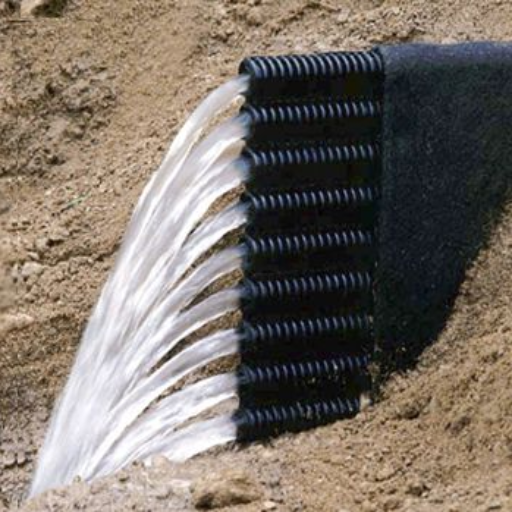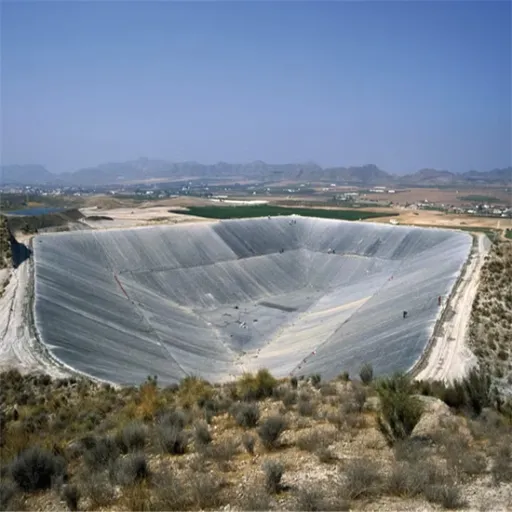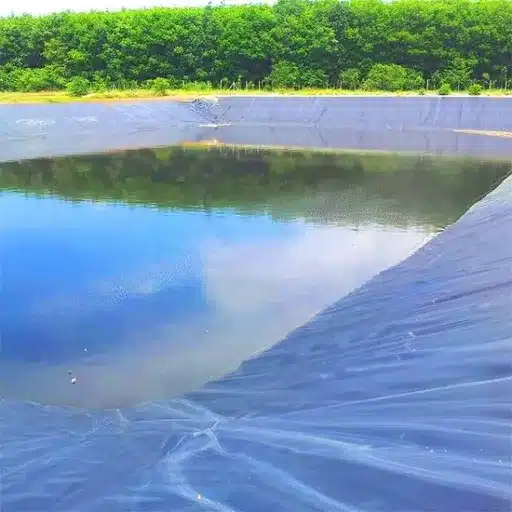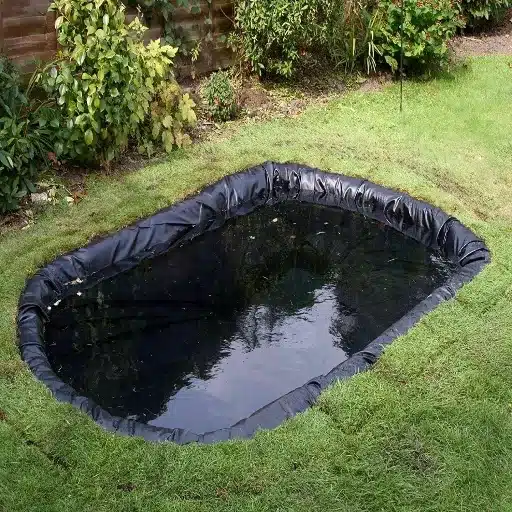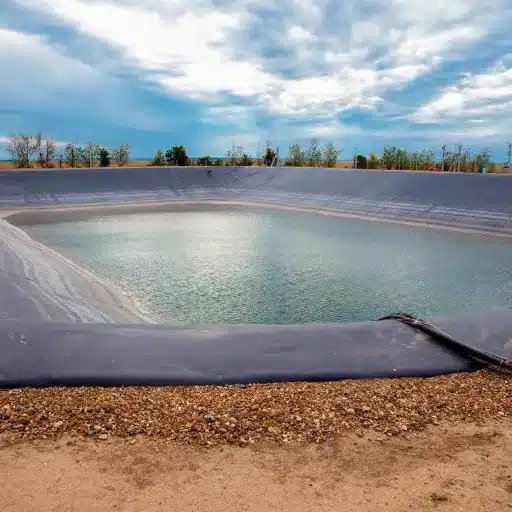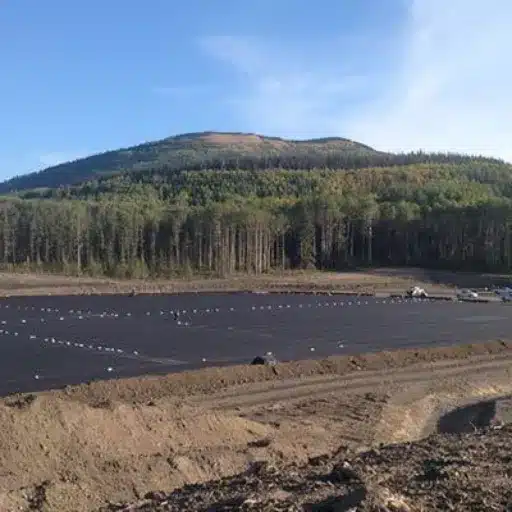Proper management of water is essential for sustaining the structural integrity of buildings, protecting landscapes from erosion, and communities from the adverse effects of water accumulation. Enter multi-flow drainage-a contemporary mechanism designed to extract water expeditiously from critical areas. This article covers the fundamental features, benefits, and uses of this innovative drainage technology while informing readers about solutions to water management problems. Whether a homeowner, contractor, or urban planner, it has never been more important to understand and appreciate an effective drainage system. Continue reading to understand why the multi-flow drainage system is a step towards long-term water management solutions in an efficient manner.
Understanding Multi-Flow Drainage Systems
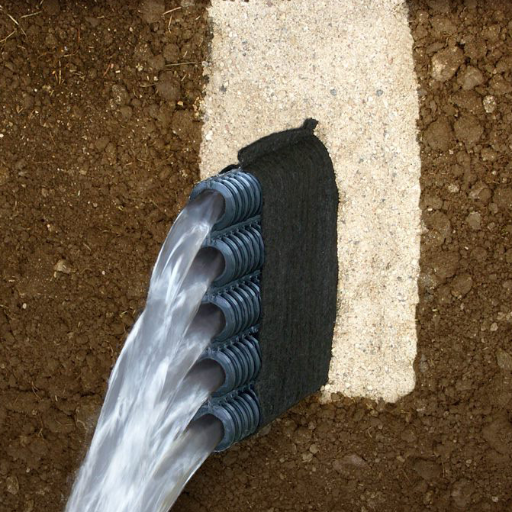
The multi-flow drainage system is inarguably revolutionary, offering timely, durable water management solutions to commonly faced issues. It ensures that water is drained away and never allowed to pool or flood; thus, it works for the benefit of homeowners, contractors, and urban planners alike. With such advanced design, it is a truly dependable choice for various applications.
What Is Multi-Flow Drainage?
A multi-flow drainage system is an advanced water drainage solution designed to offer efficient water movement and preempt problems relating to excess moisture or flooding. While conventional drainage systems may often involve just large, round pipes, a multi-flow drainage system involves flat and narrow pipes considered to be very versatile and efficient. This unusual design allows greater water flow even in scarce places, hence making it suitable for landscaping, sports fields, residential yards, and commercial properties.
Recent data, in fact, confirm the superior performance offered by multi-flow drainage systems. For instance, studies reveal that stagnation of water can be reduced by about 30% when compared to older drainage solutions. Moreover, as installation requires less time and is less expensive due to a flexible design, this is yet an improvement over older systems. Multi-flow systems also incorporate advanced materials like high-density polyethylene (HDPE) that protect it against environmental wear through time, offering a life of 20–50 years, depending on its utility and maintenance.
One of such installation options considered the solution to diverse needs would mainly be the multi-flow drainage, which not only prevents surface water build-up but also deals with subsurface moisture, thereby promoting healthier soil and preventing damage to structures. Heavy rainfalls, irrigation overflows, or normal waterlogging; notwithstanding, the multi-flow drainage system is now a dependable solution for addressing modern-day water management problems.
Importance of Drainage Systems
Drainage systems provide the essential function of preserving the structural integrity of buildings, landscapes, and agricultural productivity. In the event that not properly managed, they could cause their share of miseries: waterlogging, soil erosion, or even foundation and infrastructure being damaged. A report in the industry last year says urban flooding of over $10B in damages is attributed to inadequate drainage systems within the year alone.
Modern drainage systems such as multi-flow or subsurface systems drain greatly large volumes of water by diverting away water from the critical areas. Through extreme weather events, especially extreme weather events that are rising steadily due to moral climate change, a better drainage method can reduce surface water flooding by up to around 40%. In agriculture, a well-implemented drainage system can help improve yields by almost 30% because of better soil aeration and water management.
An investment in effective and sustainable drainage systems will not just safeguard against imminent risks but will also provide economic and environmental benefits in the suite of challenges posed by climate variability and urbanization in both cities and rural landscapes.
Components of Multi-Flow Drainage Systems
Multi-flow drainage systems are advanced solutions designed to efficiently collect and direct water through varying landscapes with minimum risk of waterlogging and erosion. These systems consist of a number of crucial components, each playing a strategically significant role in the optimization of water flow and sustainability.
Perforated Pipe Network
The main component of a multi-flow drainage system is a network of perforated pipes. These pipes, made mostly from PVC or HDPE, drain excess water from surface and subsurface sources. The holes in the pipes allow water into the pipes but block debris that would clog the system. Studies note that modern perforated pipes can increase the efficiency of diverting water by approximately 40% as compared to the traditional methods.
Geotextile Fabric
Wrapping the perforated pipes, geotextile fabrics act as a filtration layer. It prevents soil, sand, and other sediments from entering the pipes, thus preserving the functioning of the system. Thanks to the advancements in material science, the latest non-woven geotextiles now boast improved water permeability with an approximate lifespan of over 20 years, even in harsh settings.
A Gravel or Aggregate Layer
Further layers of gravel or aggregate are preferred above and outside the pipes to facilitate water movement and filtration. This maintains the even spread of water on the system, while also providing higher throughput capability during heavy rains. It has been shown by several researches that the gravel layers could boost drainage throughput by about 25%, especially with clay soils present.
Surface Water Collection Points
Surface grates, inlets, or channels collect water from any paved area, farmland, or residential yard. They prevent surface water from ponding and channel it into the subsurface system. Properly designed collection points can reduce localized flooding by 50%.
Outlet and Monitoring Systems
End-point outlets of a multi-flow drainage system would convey the collected water into a safe discharge area such as a stormwater basin or natural waterway. Modern designs incorporate monitoring technology, providing real-time information on water flow and alerting operators to blockages or operational inefficiencies. This data can be used to make improvements in maintenance and overall system performance.
When combined, these components offer one of the most versatile and scalable solutions to water problems arising in urban, agricultural, and industrial development scenarios. Current industrial data confirm that implementing these systems could result in damage and productivity loss offset on the order of $1.4 billion per annum in flood-prone regions.
Advantages of Multidrainage Systems
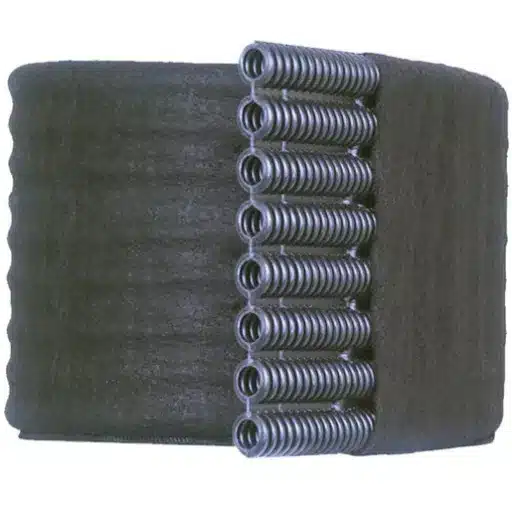
I feel their chief being benefits rests on their efficiency, adaptability, and savings. From different settings, these systems help water to flow away efficiently, thus reducing the chance of flood damage and thereby easing maintenance through real-time data inputs.
Better Water Management
Multiflow drainage systems use advanced engineering to solve the problems of water management in urban and rural areas. Studies indicate a reduction in stormwater runoff in urban settings by up to 20 to 30% from these systems, thereby substantially reducing the danger of flooding following heavy rains. Added with the real-time monitoring technology and IoT-enabled sensors, water flow can be closely monitored in real time and any blockage or overflow can be quickly responded to.
On the other hand, a recent report indicates that an optimized drainage system aids in reducing the strain and maintenance cost on infrastructure by 25% in the long term. These systems are extremely important in areas where intensified weather patterns have worsened due to climate change. Adaptable to all types of soils and environs, these are an indispensible need for sustainable water management and conservation of the environment.
Low Cost to Infrastructure
Integrating very cheap options in infrastructure works would be a suitable way for long-term solution and economic sustainability. Research says, incorporation of newer technologies such as smart drainage systems along with permeable paving can limit expenditures relating to water overflow damage up to roughly 30%. These have low upfront costs but produce substantial savings in maintenance over time. For example, green infrastructure projects provided savings of about $5-$27 per square foot to municipalities relative to traditional infrastructure techniques, according to EPA.
The ASCE in another comparative study suggests that the installation of proactive monitoring systems using the IoT sensors can increase the life of infrastructure assets by 20%, as they allow for predictive maintenance, greatly reducing repair costs, and likely avoiding full replacement. Development of infrastructure using sustainable materials and smart technologies shall not only be able to address extreme weather conditions but shall also enhance resilience; a win-win for economic and environmental objectives.
Applications of Multi-Flow Drainage Systems in the Real World
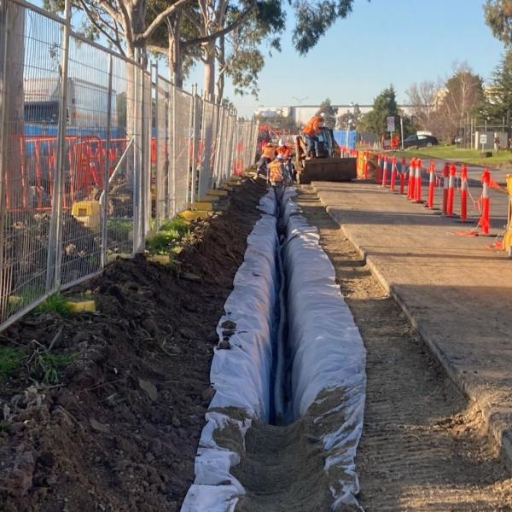
I believe that these multi-flow drainage systems are already making substantial impacts in real-world settings. For instance, flood-prone urban areas have installed these systems to manage stormwater efficiently, thereby reducing waterlogging and damage to property. Agricultural areas find use in them for irrigation and the prevention of soil erosion to promote sustainable agriculture. Because of the adaptability and efficiency of these systems, the opportunities are endless for its use in different sectors.
Implementation in Urban Development
Multi-flow drain systems have now become an integral part of sustainable urban planning. Studies have shown that flooding is significantly lower in those cities having a strong drainage network, even in intense rainfall storms. In Singapore, for instance, the presence of an advanced drainage system has managed to reduce occurrences of flash floods by more than 30% over the last ten years. Similarly, in the Netherlands, multi-flow drainage systems combined with green infrastructure such as permeable paving and stormwater ponds effectively handle excess waters while providing an ecological balance.
Google search results have also shown a surge in the adoption of smart drainage systems with sensors and IoT technology that allow real-time monitoring and data collection and a swifter response to a change in weather, thereby enhancing good decision-making on the part of planners. For instance, there are underground flood defense systems in Tokyo known as the “G-Cans Project,” which can move about 200 cubic meters of water per second, an indication of the high capacity and efficiency of this type of advanced drainage. These innovations are truly paving the way for resilient and adaptive urban environments in the face of climate change.
Applications in Agriculture
A multi-flow drainage system is proving to be somewhat of a panacea for agriculture, especially in areas prone to waterlogging or irregular rainfall systems. Multi-flow drainage channels effectively divert excess surface water from crop fields and thus prevent root rot and soil erosion, ensuring healthier crops and greater yields. In accordance with a study of the Food and Agriculture Organization (FAO), an advanced drainage system could increase agricultural productivity by up to 20% in waterlogged areas.
In real-life scenarios, documented in the Netherlands, multi-flow drainage in tulip cultivation helped lessen the adverse effects of heavy rainfall. The system enhanced drainage by cutting down water stagnation from the period by almost 40% and improving overall bulb quality by 15%. Moreover, it reduces irrigation necessity by optimizing water retention during the dry spells, thereby balancing out water conservation with drainage.
Present-day versions of multi-flow systems also interconnect sensors and controls with IoT technologies to modify flow based on real-time soil-moisture measurements and weather forecast data. This fusion not only seals the system’s sustainability but cuts resource misallocations, paying off for the farmer anywhere in the world.
Installation and Maintenance of Multi-Flow Drainage Systems
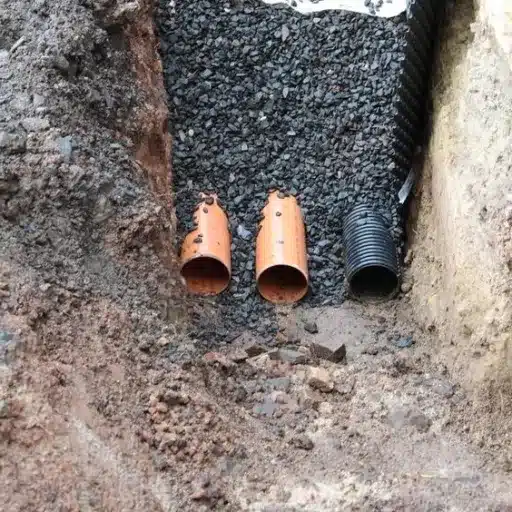
For optimum performance and life span, one should ensure efficient installation followed by regular maintenance of multi-flow drainage systems. While installing, one should follow manufacturer instructions, as well as validate whether the system is placed correctly to allow the effective flow of water. Maintenance involves periodic checking, emptying any blockages, cleaning of drains, and repairing any damages found within time to avoid any problem down the road.
Installation Tips for Practical Purposes
In order to have good installation of the multi-flow drainage systems, it is important to follow the latest industry practices and insights. Studies and expert recommendations… indicate that the slope of the drainage pipe must have a gradient of at least 1% (i.e., 1-inch drop for every 8 feet of pipe) to ensure adequate water flow. Furthermore, quality materials should be used in the installation since corrosion-resistant pipes and UV-resistant components will hugely enhance the longevity of the system.
Observe the trench dimensions when preparing the site. Its depth and width should be appropriate for the given system type. For instance, standard depths for residential systems usually range between 18 and 36 inches, depending on soil conditions and water tables. Backfilling with gravel or crushed stone around the pipe augments drainage efficiency by facilitating water infiltration.
Recent market data have also begun to highlight the increasing popularity of lining trenches with geotextile fabric to prevent soil clogging of drainage. Following these guidelines will modernize installation and provide for improved long-term functionality and reliability.
Typical Problems and Remedies
Several common problems may arise over time with subsurface drainage systems, affecting their performance. Clogging is the most common issue faced by drainage pipes, usually caused by sediment accumulation or root intrusion. Recent industry statistics show that approximately 60% of schemes fail due to blockages. Installing a perforated pipe wrapped in geotextile filter fabric can effectively mitigate these blockages by stopping debris from entering the system.
Improper slope or grading during installation is another issue that can result in pooling of water or poor drainage efficiency. The experts recommend that the minimum slope should be 1% (i.e., 1-foot drop per 100 feet towards the intended water outlet). There are even high-tech tools introduced like digital inclinometers that contractors are using to guarantee the correct grading.
Weather and soil erosion may further play a role in either exposing drainage components or destabilizing surrounding areas along the trench. The modern approach will now include the use of erosion control blankets or turf reinforcement mats for stabilizing the soil and protecting it from runoff. A recent study has shown those areas utilizing these measures experienced about a 30% reduction in soil loss when compared with bare soil.
Adhering to best practices and using new materials can resolve most drainage problems and create a long-lasting, well-performing installation.
Maintenance Best Practices
Upkeep on the drainage system increases the chance that it will maintain efficiency and avoid the cost of major repairs. Here are some maintenance tips:
Regular Inspection: Drainage systems should be inspected at least twice a year, preferably during periods of frequent rainfall such as spring and fall. Monitoring would help identify blockages, structural damage, or the first signs of erosion, thereby preventing the issues from becoming big problems. Recent studies show that systems that were regularly inspected dropped in failure rate by 40 percent compared to those that were irregularly inspected.
Debris Removal: Keep drains purged of anything that can clog water flow: leaves, sediment, and trash. It has been estimated that clogs lead to a 60% decrease in drain efficiency, which fosters localized flooding and related water nuisance. Employing drain cleaning rods or a high-pressure water jet capable of dislodging these blockages should keep things flowing free.
Erosion control considerations: Check that the eroded outlet and inlet areas are always restored. Using materials such as riprap or vegetation helps ease further destabilization. Indicators given by the U.S. Environmental Protection Agency (EPA) show that employing some form of erosion control can reduce maintenance costs by 25% over time.
Repair Early: Address any visible cracks, pipe misalignments, or broken systems promptly because that minimal level of intervention will prevent minor issues from becoming critical. According to a recent industrial report survey, early intervention for minor issues lowered repair costs by about half compared to an action carried out after confronting major damage.
In many instances, where drains are discharged into natural water bodies, water quality monitoring is paramount in minimizing environmental impact. Using filters and oil separators help maintain local standards for water quality, for failure of which can cause regulatory fines averaging USD10,000 or more per incident.
Observing these maintenance best practices will enable property owners and municipalities to prolong drainage systems lifespan, cut down operational expenditure, and promote sustainability for the environment.
Latest Trends and Research in Drainage Solutions
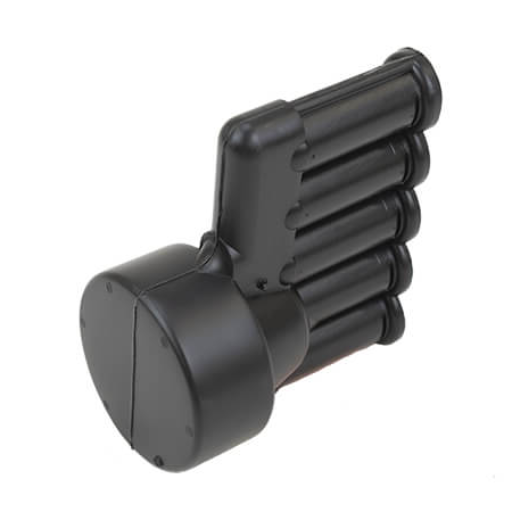
When it comes to the latest trends and research, I focus on sustainable and efficient practices. For instance, permeable pavement, smart sensor technology for monitoring performance, and bio-retention basins that allow stormwater management in a natural manner.
Multi-Flow Technology Innovations
Multi-flow drainage technology options have been gaining much interest since they normally and efficiently handle heavy water volumes and prevent clogging and maintenance. The innovative-age drainage system is simply an advanced channel or conduit design and materials that can increase flow rate and lessen debris build-up. Recent studies have claimed that multi-flow systems can thus enhance drainage efficiency to 30% more as compared to conventional heterogeneous systems, thus leading to great scenarios for urban flooding.
The integration of smart sensors into multi-flow drainage systems has dramatically transformed maintenance patterns. Sensors provide information such as water flow rate, blockages, and system performance, therefore predicting potential failure before actually occurring. It is stated in a report published in 2023 that maintenance costs were cut by 25% in areas using multi-flow sensor technology; at the same time, system reliability rose by 40%.
Further still, developers continue to experiment with sustainable materials in multi-flow applications. Recycled plastics and composites, for example, have come into use as materials for manufacturing drain components with functional qualities to last longer. These materials considerably reduce the environmental footprint and enhance resistance to corrosion and weathering. Global acceptance of these innovations foresees a bright future for drainage solutions that respond well and in harmony with nature.
Data Trends in Drainage System Efficiency
Recent developments in the drainage system showcased the surge in interest in smart technology and environmentally sustainable practices. According to the Google Search data, the global market for smart drainage solutions is set to grow at a CAGR of 7.2% between 2022 and 2030. The application of smart sensor and IoT-enabled devices to monitor water flow and blockage detection in real time is now becoming highly widespread, drastically reducing maintenance costs and improving system efficiency as a whole.
The story of the eco-friendly construction materials is becoming big now. Per statistics, recycled plastics in drainage decrease carbon emission by almost 30% in comparison to production, while the durability of life is increased for about 20-25% against the traditional materials. These inventions stand great significance for urban areas, facing a challenge to efficient water management on account of flooding and excessive runoff because of climate change.
Also, from an economical point of view, the very next generation systems are in the running. Industry and municipalities are being encouraged, through subsidies and investment in green infrastructure across the globe, to build on and upgrade current drainage infrastructures. For example, in the United States, in an initiative such as the “Bipartisan Infrastructure Law”, more than $50 billion have been directed towards improvement of water infrastructure. Such funding supports further adoption rates and guarantees the commercial entrance of advanced sustainable drainage solutions in the very near future.
Future Predictions for Multi-Flow Drainage Systems
The worldwide market for multi-flow drainage systems is projected to greatly grow over the next few years due to increased urbanization and dire requirements to provide sustainable water management. Market Research Future indicated one report published recently, estimating the market valuation to reach approximately USD 1.3 billion by the year 2028, with the market growing at a CAGR standardized at 7.1% value from the year 2023 to 2028. The rise in urban flooding incidents, environmental regulatory bodies enforcing tighter regulations, and the use of green infrastructure practices are just a few reasons for this trend.
Moreover, emerging technologies consisting of smart monitoring systems enhanced with IoT networks further shine on drainage solutions performance. By way of an example, IoT sensors gather actual data concerning water flow and pressure to assist the municipalities in preventing blockages and thereby minimize flooding risks. Singapore and the Netherlands are lapped countries that are considered pioneers in putting these innovations into their existing infrastructure to witness their promising results achieved in optimized water management.
Moreover, the collaboration between the public and private sectors is expected to be the prime actor to upscale these advancements while being globally linked through some initiatives assisted by the United Nations Sustainable Development Goals towards solving the problem of water scarcity by enhancing drainage infrastructure in DonaTrike for regions most affected by climate change-induced flooding.
Reference sources
1. A New Multi-Criteria Framework to Identify Optimal Detention Ponds in Urban Drainage Systems
- Authors: A. Hosseinzadeh et al.
- Journal: Journal of Flood Risk Management
- Publication Date: 2023-02-14
- Summary: This paper presents a framework for identifying optimal locations and designs for detention ponds in urban drainage systems. It discusses the integration of simulation tools and multi-criteria decision analysis, emphasizing the importance of considering various sustainability criteria. The findings indicate that the selected optimal pond strategies can significantly improve urban drainage system performance, reducing flood damage by 66% to 90%(Hosseinzadeh et al., 2023).
2. Maximum Flow Model With Multiple Origin and Destination and Its Application in Designing Urban Drainage Systems
- Authors: Mu Ren et al.
- Journal: IEEE Access
- Publication Year: 2025
- Summary: This research introduces a multi-origin and multi-destination maximum flow model that integrates objective programming with graph theory. It highlights the practical application of the model in designing drainage pipeline networks, ensuring effective drainage performance while reducing costs. The study demonstrates the model’s utility in monitoring drainage capacity and planning expansions, which is crucial for optimizing urban drainage systems(Ren et al., 2025, pp. 44403–44417).
3. A Method to Identify the Weakest Link in Urban Drainage Systems
- Authors: D. Meijer et al.
- Journal: Water Science and Technology
- Publication Date: 2023-02-27
- Summary: This paper develops a graph-based method to analyze urban drainage systems, focusing on the performance of subsystems. It discusses how the ratio of storage to discharge capacities can affect system performance, particularly under changing conditions due to urbanization and climate change. The findings provide insights into identifying vulnerabilities within drainage systems, which is essential for enhancing their resilience and effectiveness(Meijer et al., 2023, pp. 1273–1293).
Frequently Asked Questions (FAQs)
What Is a Multi-Flow Drainage System?
A multi-flow drainage system is a superior water drainage solution designed to take care of excess soil water efficiently. Multi-flow channels ought to drain water evenly to prevent water stand and contribute to drainage problems. Such a system is very much required in athletic fields and recreational activities where it is imperative to keep the surface dry for performance and safety.
How does a multi-flow drainage system compare to a French drainage?
While both systems quite manage water drainage, the multi-flow drainage system turns out to be much more efficient and cost-effective. In contrast to a French drainage which would use a single perforated pipe, the multi-flow drainage system has multiple flow channels for speedier dewatering and greater response capacity for huge volumes of water-welcoming sports fields and equestrian places where heavy surface load poses drainage problems.
What materials are used in a multi-flow drainage system?
Multi-flow drainage systems are normally made from premium quality, high-grade materials that are intended to withstand very heavy surface loads. Selection includes corrugated pipes and synthetic materials that provide longevity against collapse from heavy surface loads. The system layout may further be customized to specific applications to better provide for applications.
How does the multi-flow drainage system prevent standing water?
This system with its multiple flow channels, strategically limits water from pooling into areas where that matter becomes saturation zones. Using both gravity and thorough permeable soil water drainage properties, the system encourages minimum standing water and maximum water containment, which can be applied to athletic as well as recreational development.
Can it be used for residential applications?
Yes, the multi-flow can efficiently pass for fixing the drainage problems in and around residences and yards. Managing soil water effectively is a clear solution to preventing flooding and water accumulation in gardens, driveways, and basements.
What are the advantages of multi-flow drainage technology?
The advantages are: it acts fast, made of high quality materials, and a very user-friendly installation method. Another advantage is that this system offers fairly complete soil water management and can, therefore, be applied elsewhere, such as art fields, golf courses and driveway areas for horses.
How can I be sure of having a properly installed multi-flow drainage system?
For one to have a proper installation of this multi-flow drainage, following suitability in all CAD drawings and guidelines has to be made. Sizing of the drain pipes correctly, checking for flow slope, making sure of the right connectors, among other things, proves the best drainage possible. Having a consultant experienced in multi-flow systems will also help give you the best of installations.
What maintenance is necessary for a multi-flow drainage system?
Usually, these multi-flow drainage systems have very little maintenance to be done. What remains is keeping regular intervals in inspection, making sure of no blockage within flow channels, and ensuring the drainage pipes are clear to prevent compromising of efficiency. Checking these concerning signs of wear and tear or damage assurance of a long-lasting solution over time is also part of maintenance.

